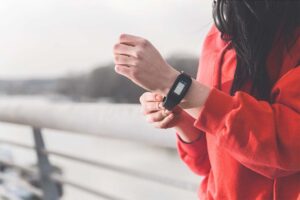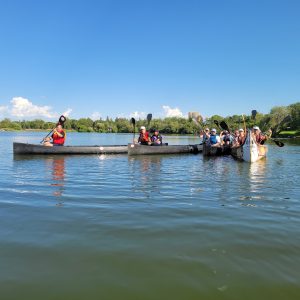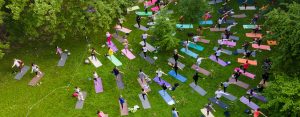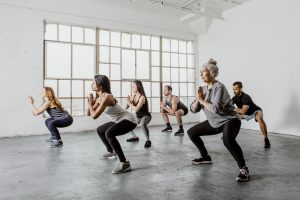With our 50th anniversary celebrations concluding as 2021 comes to an end, we reached out to some of Canada’s leading physical activity researchers and influencers to ask a simple question: What is the one thing you wish everyone living in Canada knew about getting active?

Dr. Amy Latimer, Professor and Sport and Exercise Team Lead – Canadian Disability Participation Project, Queen’s University
Through my personal and professional journey as a professor of kinesiology and a mom of three young children, three lessons I have learned about being active stand out.
First, I am always struck by how powerful physical activity is in changing our physical and mental health. I am reminded of this regularly not only when I read the latest research studies, but also when I make time to squeeze in an activity break during my workday.
Second, maintaining a physical activity routine is hard sometimes. I love being active, but my activity levels ebb and flow. Support from others and scheduling activity into my day are powerful tools to get me (and many others) back on track.
Finally, know anything is possible. To people who are not active – try moving just a little bit more than usual. You might like it or you might not, but now that you have started, keep it up. To persons with a disability – you can climb mountains, be part of the team, dance like nobody is watching, move your way and enjoy every moment. To program providers – embrace diversity and create space for all body types. You can make anything possible!
Patricia Clark, National Executive Director, Active Aging Canada
It is never too late for anyone to reap the benefits of physical activity. Whether you have been active all your life or thinking about it now, it does not matter, as you will benefit from moving more. It is so simple. It is the easiest pill to swallow to make you feel better both physically and mentally. Just moving a little more every day will keep you stronger and help to keep your independence.
No costs, time constraints, special equipment, forms or pills — just the motivation to move your body, in any way possible. The best prescription to take care of yourself, age well and stay independent is to move more. Walk, dance, ride, wheel, garden, exercise— whether you are nine or 99, whatever moves you to feel good is good for you!
Dr. Guy Faulkner, Professor, University of British Columbia, Canadian Institutes of Health Research – Public Health Agency of Canada (CIHR-PHAC) Chair in Applied Public Health
Depression is one of the most prevalent and debilitating of all the psychiatric disorders in Canada due to its high prevalence, early age of onset and high persistence. Most Canadians know that physical activity has lots of physical and mental health benefits.
Perhaps less well known is that the Canadian Network for Mood and Anxiety Treatments’ clinical treatment guidelines now recommend exercise as a front-line treatment (or monotherapy) for mild-to-moderate depression.
Exercise might be an option for individuals who prefer not to use medication or who cannot access therapy. At a population-level, there is also a large body of evidence consistently demonstrating that being physically active reduces the future risk of depression. Given the physical health benefits of exercise, a case might be made that for some Canadians, sweat is the best antidepressant!
Dr. Mark Tremblay, Chief Scientific Officer, ParticipACTION Report Card, and Senior Scientist with the Healthy Active Living and Obesity Research Group, Children’s Hospital of Eastern Ontario Research Institute
Physical activity is not complicated, expensive or constrained – let me explain. Technological advancements in biomonitoring and communication allow for the micro-monitoring and micro-management of almost anything, including basic movement behaviours like physical activity, sedentary time and sleep. This ability has led to commercialization opportunities such as wearable technologies, virtual coaches and apps, an explosion of information (including misinformation) and complexity, and a dehumanizing of basic, natural human needs, urges, signals and desires that provoked us to move in the past.
Now, however, we rely on prompts from our digital devices. It’s time to take a simple back-to-basics approach where habitual physical activity is present in daily life, throughout all seasons, alone or with others, in daylight or darkness, sometimes hard, sometimes easy, the same or different every day, but always fun and just right for you. This is the perfect formula – no device, data or dollars required!
Elio Antunes, President & CEO, ParticipACTION
For physical activity to truly become part of everyday life in Canada, healthy choices need to become the easy choices for all. That is not an easy task, and it requires fundamentally shifting social and cultural norms around getting active. Since ParticipACTION was founded in 1971, a global culture of convenience has emerged, with automation, work-from-home models, delivery apps, etc. working to dramatically decrease our everyday physical activity and significantly increase our sedentary behaviours.
Tough challenges can only be overcome through consistent focus and collaboration. We all have a shared responsibility to tackle our national physical inactivity crisis – from every level of government providing leadership and resources, to the educators and parents that are the primary influencers on our children and youth. Every single one of us has a role to play to help ourselves and others find movement and activity throughout the day.










